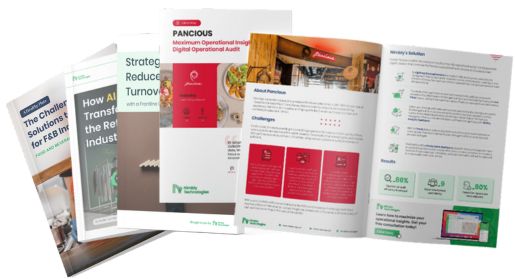

Operating Profit Margin is a profitability or performance ratio that reflects the percentage of profit your company produces from its operations, before subtracting taxes and interest charges.
In simpler terms, operating profit margin measures the profitability of your company by determining how much of revenue received is left after operational expenses are paid.
Operating profit margin indicates how well you manage your company, as it's calculating the operating expenses such as salaries, rent, and equipment leases are variable costs rather than fixed costs.
You might have little control over direct production costs, such as the cost of raw materials required to produce the products. However, your management team has a great deal of discretion in areas such as how much you choose to spend on office rent, equipment, and staffing.
Therefore, a company’s operating profit margin is usually seen as a superior indicator of the strength of a company’s management team, as compared to gross or net profit margin.
The operating profit margin also provides an insight into how well your company performs in comparison to your competitors, in particular, how efficiently your company manages its expenses to maximize profitability.
To calculate the operating margin, you need to find your operating income first. Your operating income is calculated by taking gross income and subtracting the cost of goods sold, operational expenses, and depreciation, and amortization.
The cost of goods sold is the direct cost of producing the goods or services your company sells. This amount includes the cost of the materials and labor directly used to create the goods or services. It excludes indirect expenses, such as distribution costs and sales force costs.
The items that makeup costs of goods sold include:
All companies have general overhead expenses, also referred to as selling, general, and administrative expenses. Items such as renting space for corporate offices, paying utilities, and hiring contractors to ensure your business complies with regulatory requirements are all examples of what is included in general overhead.
Companies also typically spend money on research and development. That expense gets taken out of revenue. Also, if a company has fixed assets that must be amortized or depreciated, the appropriate allowances are taken out at this point.
Subtract all of those items to find your operating income, from which you can then determine your operating margin.
Then, divide the operating income by total revenue. The operating profit margin calculation is the percentage of operating profit derived from total revenue.
For instance, Fashion XYZ had revenue of $50,000, its cost of goods sold was $15,000, and its operating expenses was $10,000.
Operating income: $50,000 - ($20,000 + $10,000) = $20,000.00
Operating margin: $20,000 ÷ $50,000 = $0.40 or (40%)
This means for every $1 in sales that Fashion XYZ makes, it's earning $0.40 after expenses are paid.
Work with your suppliers to reduce the cost of goods sold. If you can negotiate a lower price, a volume discount, or other cost-savings deal, you can reduce your expenses.
Product packaging, although often overlooked, is another contributing expense. Consider a product-packaging design that is less expensive to save additional cost per item.
Reducing your cost increases the profit margin on your products if you keep your pricing at current levels, increasing your income.

Always know the amount of products you have on hand, as well as how fast they can sell.
Conduct daily inspections every pre-opening, shift change, and closing time. Ask your employees to stock-take and write down the amount of stock returned or broken at the end of every shift.
You can use a digital checklist management like Nimbly to perform reporting and stock-taking easily and effectively.
Good inventory management will help you make better decisions around purchasing, sales, and marketing, allowing you to sell more products and reduce the need for markdowns.
According to the Harvard Business Review, companies lose over 20% of their productive capacity to organizational drag — “the structures and processes that consume valuable time and prevent people from getting things done.”
For that reason, you must evaluate your store processes to ensure that they’re not slowing people down.
The key is to come up with procedures that can easily be replicated and implemented by your staff even when you’re not around.
Also Read: The Role of Checklists in Business Operational Success
Another great way to streamline your operations is to automate specific tasks in your business. By digitizing repetitive activities, you can reduce the time, manpower, and operating expenses required to run your business.
Go through all the tasks that you and your employees complete day-to-day, and see if you can digitize any of them.
Are there burdensome activities that are consuming your team's time? Do you have to re-enter any data from paper to spreadsheet or following up on issues resolution through various chat groups?
Look for solutions that can take care of them for you.
Also read: Digital Checklist for Cost-Efficient Business Operations
Increase the basket size from shoppers that already buy from your store is a great way to improve your profits. You’ve already succeeded in getting them to buy from your store; now go and find ways to maximize their spending.
Start by finding products likely to be purchased together. Recommend relevant items when a user has committed to purchase a product.
You can also place your most profitable products in the shop window and in the best area customers naturally go to in the store, or now on the first page of your e-commerce.
Another tactic is to put your best sellers and up-sells near the counter for impulse buys to increase average order value. Recommend the relevant items before customers check-out their purchase.
Do all you can to keep your customers purchasing from you.
Perhaps you can better communicate on how to use the product, or give them personalized promotion.
Nurturing your current customers eliminates or considerably reduces the acquisition or marketing cost on that second and all following transactions.
Identify areas where you use more raw materials than you need or processes that take more time than necessary.
Identifying areas of waste in your business—and eliminating those wastes—can save you money and increase your bottom line.
Lean manufacturing recognizes the 8 types of wastes that are costing your business. While the concept largely applies to manufacturers, you can also apply the concept to your business operations.
The 8 types of wastes can be summarized using the acronym “DOWNTIME”:
D – Defects (defective products due to issues like quality control, poor handling, etc.)
O – Overproduction (ordering or making more merchandise than necessary)
W – Waiting (unplanned downtime, absences, unbalanced workloads, etc.)
N – Not utilizing talent (not fully leveraging the skills or potential of your team, having employees do the wrong tasks, etc.)
T – Transportation (unnecessary movements of products — e.g., unnecessary shipping, inefficient movement from one store to the next)
I – Inventory excess (surplus or dead stock sitting in your backroom)
M – Motion waste (unnecessary movements of people — e.g., inefficient store layout)
E – Excess processing (having to process, return, or repair products that don’t meet the customer’s needs)
Go through each of these components individually and see if they exist in your operations. If these types of wastes are present, find ways to reduce or eliminate them.
Inefficient operational processes are often overlooked by businesses. You can reduce your operating expenses and save a big chunk of time if you go through all the processes carefully and see if you can improve any of them. Subsequently, your operating profit margin will increase significantly.
Nimbly is a mobile solution that turns manual operational processes into actionable insights. By digitizing manual checklists and converting the collected data into real-time insights, Nimbly enables companies to monitor, manage, and evaluate business operations effortlessly.
Consult how your business can start implementing operations management with the Nimbly team free of charge.
